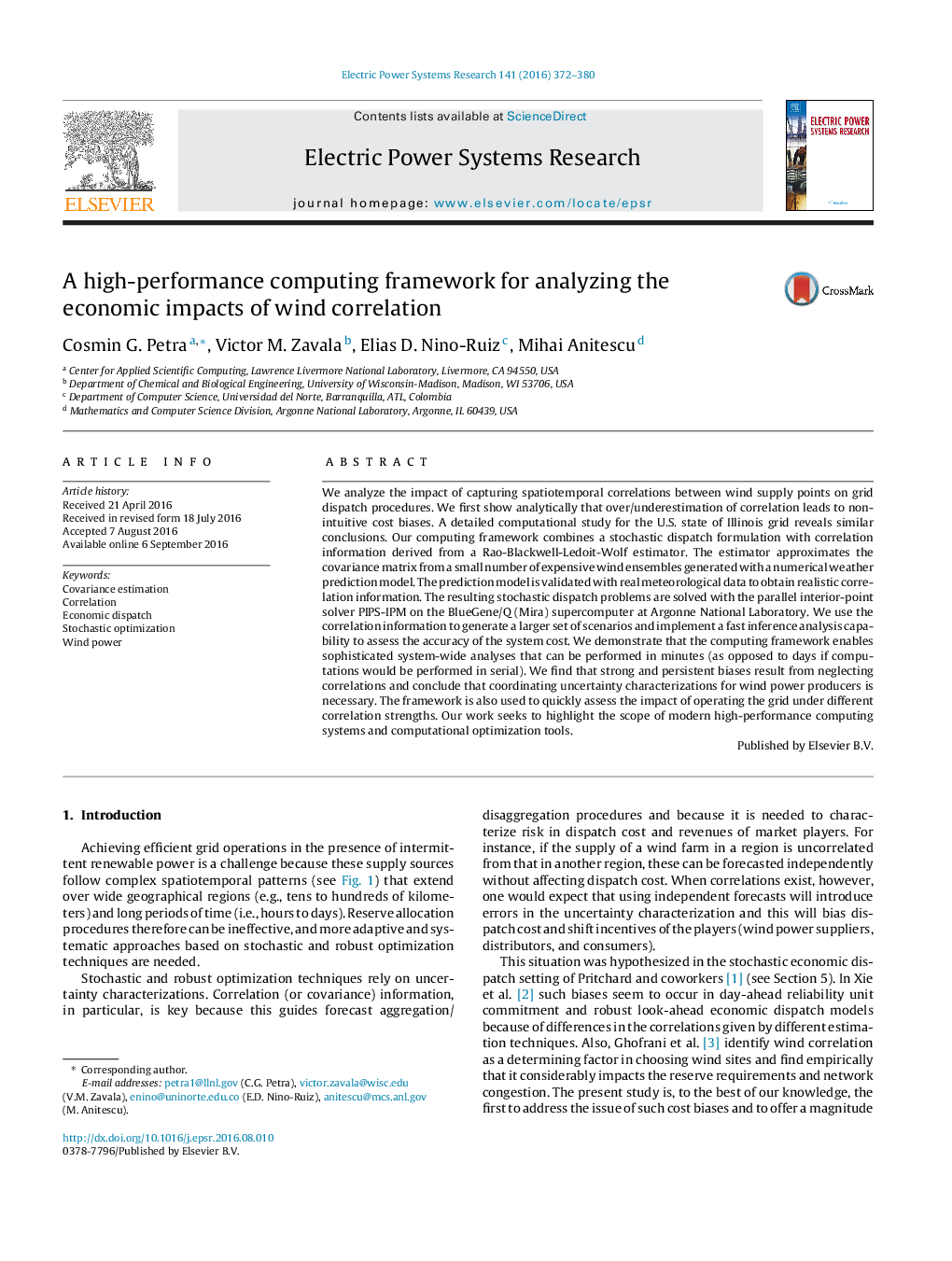| Article ID | Journal | Published Year | Pages | File Type |
|---|---|---|---|---|
| 7112495 | Electric Power Systems Research | 2016 | 9 Pages |
Abstract
We analyze the impact of capturing spatiotemporal correlations between wind supply points on grid dispatch procedures. We first show analytically that over/underestimation of correlation leads to nonintuitive cost biases. A detailed computational study for the U.S. state of Illinois grid reveals similar conclusions. Our computing framework combines a stochastic dispatch formulation with correlation information derived from a Rao-Blackwell-Ledoit-Wolf estimator. The estimator approximates the covariance matrix from a small number of expensive wind ensembles generated with a numerical weather prediction model. The prediction model is validated with real meteorological data to obtain realistic correlation information. The resulting stochastic dispatch problems are solved with the parallel interior-point solver PIPS-IPM on the BlueGene/Q (Mira) supercomputer at Argonne National Laboratory. We use the correlation information to generate a larger set of scenarios and implement a fast inference analysis capability to assess the accuracy of the system cost. We demonstrate that the computing framework enables sophisticated system-wide analyses that can be performed in minutes (as opposed to days if computations would be performed in serial). We find that strong and persistent biases result from neglecting correlations and conclude that coordinating uncertainty characterizations for wind power producers is necessary. The framework is also used to quickly assess the impact of operating the grid under different correlation strengths. Our work seeks to highlight the scope of modern high-performance computing systems and computational optimization tools.
Related Topics
Physical Sciences and Engineering
Energy
Energy Engineering and Power Technology
Authors
Cosmin G. Petra, Victor M. Zavala, Elias D. Nino-Ruiz, Mihai Anitescu,
